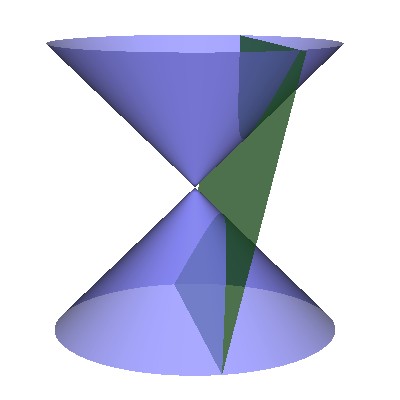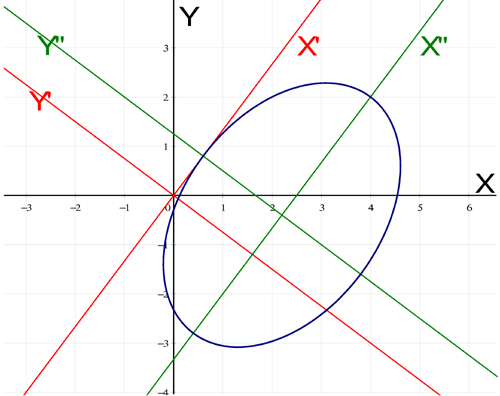





By making the right choice of orthonormal frame, the general equation of the non-degenerate conic can be simplified to one of the classical reduced equations. VisuMath will calculate the general equation of the conic and make a drawing of it in which all relevant axes are also drawn. First, one chooses the right type of conic and enters the appropriate values for the parameters.
Then the orthogonal transformation is entered. The orthogonal transformation, this is a rotation possible combined with a reflection, transforms the (X,Y)-axes to (X',Y')-axes. This transformation is entered by giving the images of the base vectors (up to a factor). Make sure that the vectors are orthogonal since we need an orthonormal frame. VisuMath will then norm these vectors (= rescale to length 1).
Then one needs to enter the translation that needs to be applied to the transformed frame (X',Y'). One obtains the new orthonormal frame (X",Y") with respect to which the conic has the simple reduced equation entered earlier. The translation is entered by giving the coordinates of the origin of the new orthonormal frame (X",Y") with respect to the frame (X',Y').
By hitting the button "Go", the general equation of the conic appears in its most simple form. Below, one finds the graph of an ellipse:
